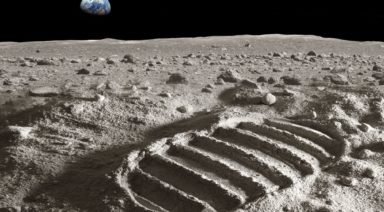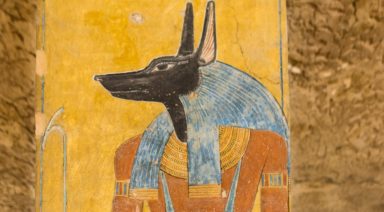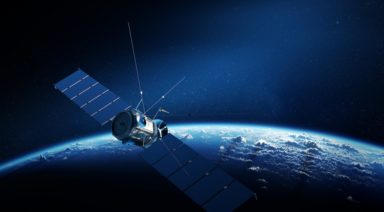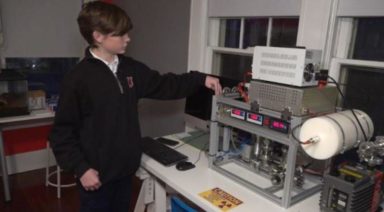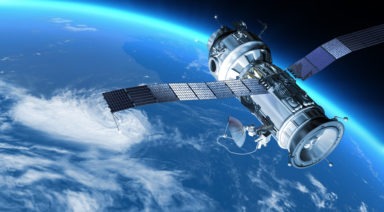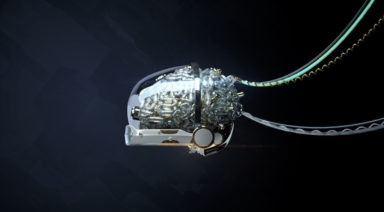NASA Preparing to Deflect Massive Asteroid From Earth Collision
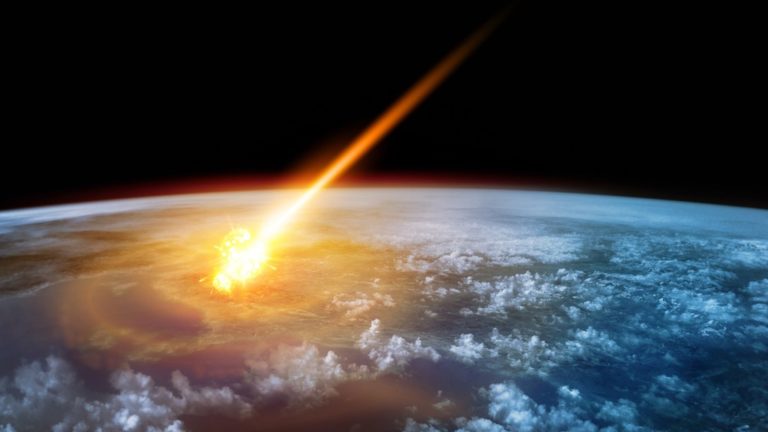
NASA is preparing to deflect the massive asteroid, Bennu, currently set on an Earthbound trajectory for the year 2135. This potential Earth impactor is about 1,600 feet long and may require a nuclear blast to disrupt its course.
The likelihood of Bennu hitting our planet is a 1-in-2700 chance, but when it comes to an asteroid that size, those odds are a bit too close for comfort. In the event of an impact, Bennu, would slam into the planet with 80,000 times the force of the nuclear bomb dropped on Hiroshima.
Depending on where it strikes, Bennu would blow a crater over a mile into the Earth’s crust, causing mega-tsunamis, fires, and likely a nuclear winter. The chances of our species surviving would be slim.
NASA is working proactively to nudge Bennu on a different course, as it gets more difficult to do so, the longer we wait. In conjunction with the National Nuclear Security Administration, NASA is working on a project proposal called HAMMER, the Hypervelocity Asteroid Mitigation Mission, to prevent humanity from sharing the same demise as the dinosaurs.
HAMMER is ideal for knocking large asteroids off course, especially those with a short timeframe for impacting Earth. Sound like the premise of the 1998 Michael Bay blockbuster, Armageddon?
But HAMMER is still just a hypothetical mission, funding for it hasn’t been approved and the use of nuclear weapons is rightfully a sensitive proposition. Scientists must exercise caution when employing nuclear weapons to break up asteroids, as blasting the rock into a multitude of smaller, radioactive meteorites might pose a greater risk.
The alternative to a nuclear armed probe is an “impactor,” like the one NASA used in its 2005 Deep Impact mission that successfully collided with the Tempel 1 comet. An impactor would push the asteroid off course, but this solution is only feasible for smaller asteroids.
In Sept. 2016, NASA deployed the probe, OSIRIS-Rex, to land on the surface of Bennu to collect and return samples to Earth for further study. The probe is scheduled to reach Bennu in August of this year and return to Earth in 2023.
Though Bennu may not hit us for another century or more, planning to mitigate its impact now could save future generations from having to deal with a potential catastrophe at the last minute. Though astrophysicists warn that we face a greater threat from impact by unseen objects.
The interstellar asteroid, Oumuamua, had a similar width as Bennu and wasn’t picked up on our radar until it was already on its way out of the solar system. The Chelyabinsk meteor also snuck under the radar, exploding in Earth’s lower atmosphere in 2013. The meteor exploded before it hit the ground and still injured 1,500 people.

Secret Space Programs and Breakaway Civilizations

In July 2014, on the 45th anniversary of Apollo 11’s moon landing, the government declassified information about a secret space program from the 1950s called Project Horizon. The plan outlined the building of a permanent military base on the moon. Ten to twenty men would be sent with all their supplies and nuclear weapons. The secret moon base would be used for surveillance against and protection from the Soviet Union, and the men would have constant communication with the Earth.
The released documents show that the scientists knew it wasn’t possible to implement the plan, but it was expected to be put in place as technology advanced. Project Horizon never got off the ground. But, that isn’t the end nor the beginning of the story about secret space programs from the past, present and the future.
Secret Space Programs and FDR
In the 1940s, according to recently released documents, President Franklin Delano Roosevelt commissioned a secret space program. He was concerned about how to move large numbers of people in case of nuclear war to avoid massive radiation damage. He thought there might also be a need to escape the ravages of some other global cataclysmic event. Since there was no place on Earth to which large masses of people could be moved, he considered the possibility of moving to locations in space.
At first, moving to the nearest star, Alpha Centauri, seemed like an option. However, the distance made such a plan impossible. As a next step, FDR focused on the moon, Mars or Venus as alternatives to Earth.
Beginning in 1945 at the conclusion of WWII, after President Truman took over, he brought 1,500 German scientists and engineers to the U.S. The scientists, under Hitler’s leadership in Nazi Germany, made advancements in the development of flying saucers, like the Nazi Bell, before and during the war. The German scientists worked at Fort Bliss, near El Paso, Texas, and were assigned the task of developing secret space programs under the project name of Operation Paperclip.
Truman believed the Germans had knowledge of anti-gravity propulsion engines and other spacecraft flight technology. Werner von Braun was the most well-known member of this group, who eventually became the designer of the Saturn V launch vehicle, which was used to propel American astronauts to the moon. He eventually became the director of NASA’s Marshall Space Flight Center and spoke out frequently about the need for space exploration.
Secret space programs are believed to be financed by secret “Black Budget” programs with contributions made by people with great wealth, private contractors and some government agencies. This secret funding keeps the programs from being subject to congressional oversight. Since the early 1960s, the programs have been kept secret even from the president: A memo was found in the newly released documents that said to keep “Lancer,” President Kennedy’s secret service nickname, out of the loop.
Secret Space Programs and Breakaway Civilizations
Secret space programs may have developed Breakaway Civilizations in outer space. Well-respected UFO and space researcher Richard Dolan, defines a Breakaway Civilization as a secret group of technologically advanced people who don’t share their knowledge with the rest of the world. These are essentially the Earth’s elite who have knowledge far above the rest of the world.
These elite may know of an upcoming imminent global geological cataclysm event and are building space bases as shelters for themselves. For example, they could be planning their escape from Nibiru Planet X, which “triggers comet showers” every 27 million years. One of those comets is expected to crash into the Earth and totally destroy it sometime in the not too distant future.
Scotland native, Gary McKinnon, hacked into thousands of government secret files. He found evidence of an anti-gravity propulsion system that traveled at incredible speeds. Also, he found evidence of portal technology that, when coupled with anti-gravity propulsion, would allow space travel to other stars and planets to be accomplished in a short amount of time.
It appears that Einstein’s theory that nothing can travel faster than the speed of light has been debunked. It also appears the Black Budget keeps these secrets even from NASA, since NASA apparently does not have access to anti-gravity technology. It still propels its rockets with fossil fuel.
McKinnon claims he saw nearly 300 photos of structures and civilizations existing on the back side of the moon. He says these structures (alien bases on the moon) are erased out of any photos when they are released to the public. Unfortunately, when he hacked into the computers, he was using a dial-up connection so he couldn’t download the photos. He says he took a screenshot of one that was saved on his computer, but his computer was seized when he was arrested. When his computer was subsequently returned to him, the photo was gone.
McKinnon also reported viewing a file that included names of “non-terrestrial officers” who he says were assigned to ships that weren’t U.S. Navy ships. He concluded these were the officers assigned to space ships, not navy ships, indicating that Breakaway Civilizations already exist.
There are many outstanding questions about secret space programs. Why do these programs remain secret? Will there be an opportunity for non-elite citizens to be part of a Breakaway Civilization? A poll taken in 2015 shows that 54 percent of Americans believe extraterrestrial intelligence exists. With such a large number of people supporting alien existence, why is there still a need to maintain secrecy?
Want more like this article?
Don’t miss Deep Space on Gaia for more on the long and hidden history of Earth’s secret space program.




